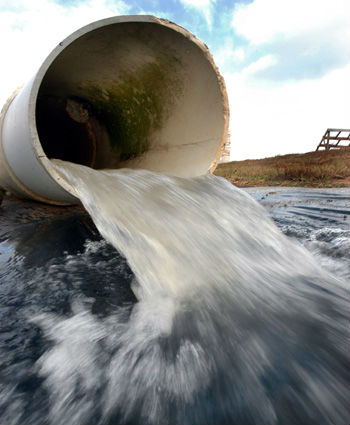SWANSBORO — McDonald’s request for an exemption to the state’s stormwater regulations illustrates how confusing the rules can be, especially when different regulators seem to enforce them differently. It all has the mayor of this small town on the White Oak River scratching his head.
Ambiguity in the state’s coastal rules for stormwater management on property proposed for redevelopment has Swansboro Mayor Scott Chadwick pondering whether his little town can do better by adopting its own rules.
Supporter Spotlight
Chadwick said last week he’s in a “wait-and-see” mode as the state Division of Water Quality’s regional office in Wilmington considers what to do about a stormwater plan for a McDonald’s restaurant. The company wants to build on a 6.5-acre tract at the corner of N.C. 24 and Phillips Loop Road that has long been clear of structures and pavement and is the former site of a service station and car wash.
 McDonald’s is seeking an exemption from the state’s stormwater rules for its new restaurant in Swansboro. Photo: McDonald’s Inc. |
Under a 2008 state law adopted by the N.C. General Assembly, “redevelopment” sites need only meet the stormwater controls required when the site was originally developed if the new project doesn’t add more impervious surface. McDonald’s plans include more hard surface than once existed on the site. If the exemption is granted, the new restaurant may not have to capture any of its runoff because the previous structures pre-dated the state’s stormwater rules and included no controls.
The issue first arose in October, when McDonald’s representatives appeared before the Swansboro Planning Board and had no stormwater plan because they were proceeding under the assumption that the project would be exempt from state rules. Planning board members weren’t pleased and suggested that McDonald’s rework the site plan to include some stormwater controls. The board a month later voted to recommend approval of the site plan after the developer added a vegetated retention area to capture 44 percent of the runoff from the site.
Without the exemption, McDonald’s would have to meet the strictest standards of the stormwater rules because the restaurant would be within a half-mile of shellfish waters. It would have to capture all of the runoff produced by the worst average rainstorm in a year, or about 3.5 inches of rain in 24 hours.
Jim Gregson, regional supervisor for the surface water section in the state Division of Water Quality’s regional office in Wilmington has said that the state makes a provision for the type of redevelopment proposed by McDonald’s. The exemption could be granted, “As long as they can treat anything that exceeds what was there before,” he said.
Supporter Spotlight
But Gregson also said the treatment system installed for that overage must be designed to accommodate the entire area that will drain to it.
After lengthy discussions, McDonald’s has submitted a plan to the division. But Gregson said Friday that the review of the proposal is being hampered by a lack of information over just how much impervious surface was on the site before it was cleared and the pavement removed years ago.
“In this case, the developer got the property in the condition it is in now,” Gregson said. “This developer didn’t tear down the old buildings. And that makes it difficult to show us what was there, how much of the area was built upon, or was it completely paved?”
 Mayor Scott Chadwick |
Possible documentation, Gregson said, could include aerial photographs or surveys. But the key is how much more new impervious surface there will be under the McDonald’s plan compared to the old development, and that is difficult to determine right now. McDonald’s would add about 3,000 square feet of impervious surface, according to the site plans that it submitted to the planning board
The guiding regulations, 15A.NCAC.02H.1000, state simply that “Redevelopment activities that result in built upon area and provide stormwater control equal to the previous development” are exempt from the rules. The rules contain no language about granting the exemption to projects that exceed the built up area.
Initially, Chadwick said last week, he was very concerned that McDonald’s, banking on the exemption, had not submitted an engineered stormwater plan to the town at all.
“We weren’t happy,” he said last week. “I started talking to our board (of commissioners) about maybe adopting our own rules. But the thinking now is that we should wait to see what the state will do.”
Engineers have assured him that that the state will require McDonald’s to submit a stormwater plan, Chadwick said.
“I am still concerned, though,” he continued. “And this is not just about McDonald’s. I know they have done their marketing studies, and if they do everything right, follow our rules and the state’s, then it’s certainly proper for them to come here to Swansboro. But anyone who develops here needs to take into consideration how close we are to the water and how much we depend on our water resources.”
 Derb Carter |
Others aren’t so sure that the problem isn’t with the state’s rules and the division’s interpretation of them.
Derb Carter, an attorney with the Southern Environmental Law Center in Chapel Hill, said he was perplexed by the division’s stated willingness to grant an exemption, absent clear compliance with the state law for those exemptions, if the developer agrees, as Gregson put it, to “treat anything that exceeds what was there before.”
Gregson agreed that the stormwater rules enacted by the legislature “don’t specifically tell us to handle it that way.” But, he said, “That has always been our interpretation. I think it’s very fair to give someone credit if the site was already developed.” He added, however, that “The question is how far back do we look?”
Carter said that if there is no rule that specifically allows the division to do that, it’s problematic.
“An internal policy (to do that) would in effect be rule-making,” he said. “You’re essentially making a rule without going through the required process, and the reason you have that process is so that everyone knows what the rules are.”
Gregson said redevelopment is common, but a case like the McDonald’s in Swansboro – redevelopment of property that was cleared years previously by someone who has nothing to do with the current developer – “doesn’t come up very often.” He also said that while some people don’t like the existing redevelopment exemption language even without the office’s “interpretation,” changing it would require legislative action.
The division’s other coastal regional office, in Washington, N.C., seems to interpret the exemption language differently. Some developers who do business in that region say that redevelopment projects that exceed the amount of existing impervious surface don’t qualify.
Gregson’s counterpart in the division’s Washington office, Amy Adams, said yesterday that the agency is aware that there “have been some inconsistencies” in how the redevelopment exemption has been handled by the two offices. As a result, she said, the issue will be a subject for discussion today during the agency’s regularly scheduled “consistency review” meeting. The very reason for those meetings, she said, is to get those involved in the nuts-and-bolts of the process together, in order to discuss projects in their areas and to come to a consensus on how to handle issues consistently.
 Stormwater runoff is the major source of water pollution along the coast. Photo: NCSU |
Todd Miller, executive director of the N.C. Coastal Federation, said the way in which the state and local governments handle stormwater management in redevelopment projects is very important. “Most of the water quality problems on the coast are primarily due to polluted stormwater runoff,” he said. “Typically, we rebuild our world every 50 to 75 years. We have a lot of development that has been around that long.”
New projects on old sites, he said, present “an opportunity” to make some gains in the ongoing effort to improve water quality.
“You don’t want to squander those opportunities to make progress. We encounter situations with redevelopment quite frequently,” Miller added. “A number of local governments have adopted their own stormwater rules to help deal with that.”
And, Miller said, it’s not just a pollution issue; public health and safety are also involved. Runoff from developed – or redeveloped – property often runs into streets, not just coastal water bodies, and results in flooding that poses threats to motorists. And in areas where there are no central sewer systems – not unusual on the coast – stormwater can flood property with septic tanks, resulting in bacterial pollution in standing water.
The federation, he said, is always willing to help local governments with development of better ordinances and with practical and often relatively inexpensive solutions to stormwater problems. Rain gardens and other natural features can hold the water and be aesthetically pleasing.
But, he said, holding those who redevelop property to high standards “does not have to be a show-stopper.” He said, for example, that the McDonald’s in Cape Carteret, just up the road from Swansboro, is a good example. Its efforts to comply with stormwater rules for a new restaurant on the site of an old McDonald’s added “only marginally to the cost.
“Many times all it takes is just a little forethought,” he said. “Low-impact development results in a more attractive project, one that actually makes people want to come there.”







